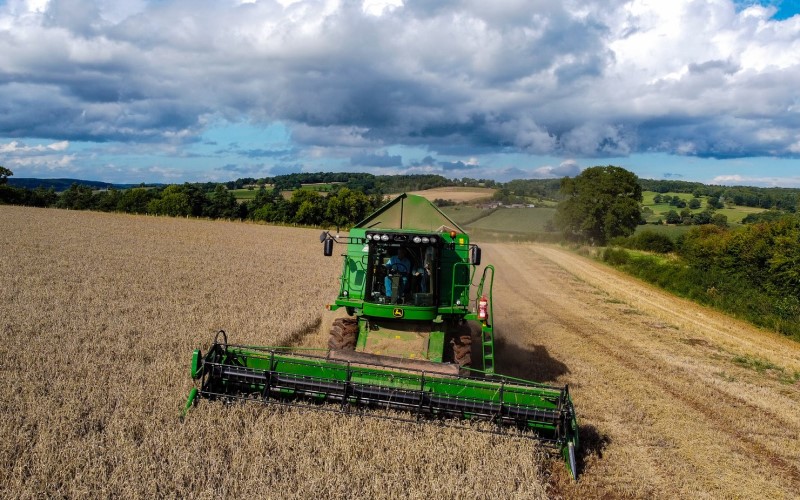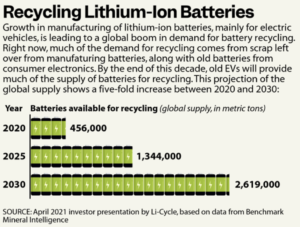Tackling the challenges of feeding 10 billion people, keeping our cities cool and meeting the increasing demand for batteries without destroying the environment.
Feeding 10 billion sustainably
Over the last 50 years, the world’s cultivated land has increased by 12 per cent but production has approximately tripled. The higher crop yields have largely been achieved by increases in irrigation, application of fertilizers and pesticides, and use of diesel powered equipment, all of which have deleterious effects on the soil, the air, the rivers, the oceans and biodiversity. Despite the increased supply of food, almost 10 per cent of the world’s population are currently undernourished and a growing global population and increasing prosperity in developing countries will see the demand for farm food increase by 70 per cent by 2050. And let’s not forget climate change.
The UN Food and Agriculture Organization (FAO)’s concerns about the availability of land and water resources for food and agriculture globally are made clear in the subtitle, “Systems at breaking point”, of their recent report. To illustrate the FAO’s concern:
- 95 per cent of the world’s food comes from the land;
- Rainfed farming produces 60 per cent of the world’s food on 80 per cent of the cultivated land. Irrigated farming produces 40 per cent on 20 per cent of the land;
- Agriculture accounts for 72 per cent of all surface and groundwater withdrawals, mainly for irrigation;
- 62 per cent of irrigated land is degraded;
- Agriculture causes about 55 per cent of the world’s water pollution (industry 30 per cent and domestic activities 15 per cent);
- A third of the world’s soil is moderately to highly degraded. Soil salinity removes 1.5 million hectares of productive farmland each year;
- Soil erosion carries away 20-37 billion tonnes of topsoil annually and reduces cereal production by 7.6 million tonnes;
- Water resources per capita decreased by 20 per cent between 2000 and 2018.
The FAO recommends urgent action in four areas to meet the rising demand for food in an environmentally sustainable way: improved land use planning to guide land and water allocation and governance; integrated solutions to help farmers use resources more efficiently, minimise environmental impacts and build resilience to climate change; use of innovative technologies to improve information about crops and environmental conditions, and improve rainwater capture; and invest in long term sustainable land, soil and water management, including restoring degraded ecosystems.
Even the FAO’s Synthesis Report runs to almost 100 pages so if you’d like to explore the recommendations further, I recommend the key messages or this article.
CAFOs (Concentrated Animal Feeding Operations) are probably not the future that the FAO has in mind. They are industrial-scale facilities that breed and rear large numbers of domestic animals for consumption – chicken, turkeys, pigs, cows, for instance. I’ve no idea how directly relevant this five-minute video from North Carolina is to situations in Australia but it’s worth watching to see how groups of concerned citizens are monitoring the land, air and water polluting practices of CAFOs with planes (because the facilities are often hidden from roads) and by sampling nearby water courses. The common air pollutants — ammonia, hydrogen sulphide, methane and particulate matter — are harmful to human health, while the nutrients (e.g. nitrogen and phosphorous) that flow into waterways cause algal overgrowths that kill most of the aquatic life.
P&I doesn’t often focus readers’ attention on personal fetishes but in this half-hour video, containing lots of close up photos, Stephen Axford describes his with understated but stimulating passion and humour. His wife seems to be a willing participant.
Speaking truth to power
Even if you aren’t such a huge fan of Greta Thunberg as I, you might be interested in this interview where Thunberg succinctly sums up the current climate crisis:
“Right now, what’s holding us back is that we lack that political will. We don’t prioritize the climate today. Our goal is not to lower emissions. Our goal is to find solutions that allow us to continue life [as it is] today. And, of course, you can ask, “Can’t we have both?” But the uncomfortable truth is that we have left it too late for that. Or the world leaders have left it too late for that. We need to fundamentally change our societies now. If we would have started 30 years ago, it would have been much smoother. But now it’s a different situation.”
She also discusses the factors that initiated and continue to drive her commitment to climate action, including her Asperger’s Syndrome.
To complement Thunberg’s global perspective, Ayesha, a 19-year-old Bangladeshi woman, describes the effect of sea level rise on daily life in coastal Chittagong. Remarkably, a hospital that was built in 2005 now experiences flooding of its ground floor with every high tide.
As any regular reader would have perceived, I am pessimistic about humanity’s chances of avoiding catastrophic climate change — and one of the reasons I produce this weekly roundup is to provide evidence of why I feel this way. But while I despair at the stupidity and/or selfishness of many who are in positions to do something to change the climate trajectory but fail to do so, I have not yet been reduced to tears. Unlike George Monbiot who recently broke down on a morning TV chat show in the UK and explains the reasons why. Thunberg and Monbiot are not just passionate and informed about climate change, they are also incredibly articulate. They both have ways of expressing themselves that have me saying “Yes!, Yes!, Yes!” repeatedly as I read their contributions.
Cool cities
Climate change is posing problems for cities and vice versa:
- cities produce around 20 per cent of the world’s greenhouse gases, much of it related to the heating and cooling of buildings;
- an increasing proportion of the world’s growing population is living in cities;
- as global warming increases, the urban heat island effect is making cities even hotter than surrounding areas and creating immense problems for those who cannot escape the heat, e.g. outdoor workers and those who cannot afford home cooling.
European researchers have produced evidence to support three promising initiatives to combat these problems:
- Vertical green gardens on the sides of buildings can reduce the heat loss by 31 per cent. As well as reducing energy consumption and emissions, green walls improve air quality, help biodiversity, absorb noise and improve health.
- During hot weather urban trees are 4-12 degrees Celsuis cooler than bricks and mortar and mitigate the urban heat problem.
- Carbon taxes are widely supported as a cost-effective way of reducing emissions but they can increase the price of home energy and motor fuel and place financial strain on low income households. An alternative approach is to make “green” electricity and travel on trains, buses and trams free in cities. This has reduced home energy emissions by 13 per cent and motor fuel emissions by 24 per cent and can be both more effective and fairer than redistributing the revenue raised by a carbon tax.
Battery recycling
The move to more batteries for vehicles, storage and consumer electronics is undoubtedly desirable but it does have problems, particularly related to the mining of the rare metals used (lithium, cobalt, nickel) and the disposal of the spent batteries. Recycling the components reduces the need for new materials and decreases the landfill. This is particularly important as the Lithium-Ion batteries available for recycling, mainly from EVs, is projected to increase almost six-fold between 2020 and 2030. The race is on to develop better ways of recycling batteries.
Photographer wins but community loses
Although it’s becoming less the case as the world experiences more frequent and more dramatic extreme weather events, environmental degradation is a rather slow process that can be difficult for the patrons of the Clapham omnibus to see in their daily lives. This is a situation that can induce disbelief or complacency. But how can anyone be complacent about the image below from Nature’s best science images of 2021? The narrow road near Huelva on Spain’s south coast separates the toxic chemicals in a mine reservoir from fresh water. I say ‘separates’ but it’s difficult to believe that there are no toxins leaching through the road’s foundations with extremely harmful consequences for the health of marine animals and plants, and humans.
Peter Sainsbury is a retired public health worker with a long interest in social policy, particularly social justice, and now focusing on climate change and environmental sustainability. He is extremely pessimistic about the world avoiding catastrophic global warming.



